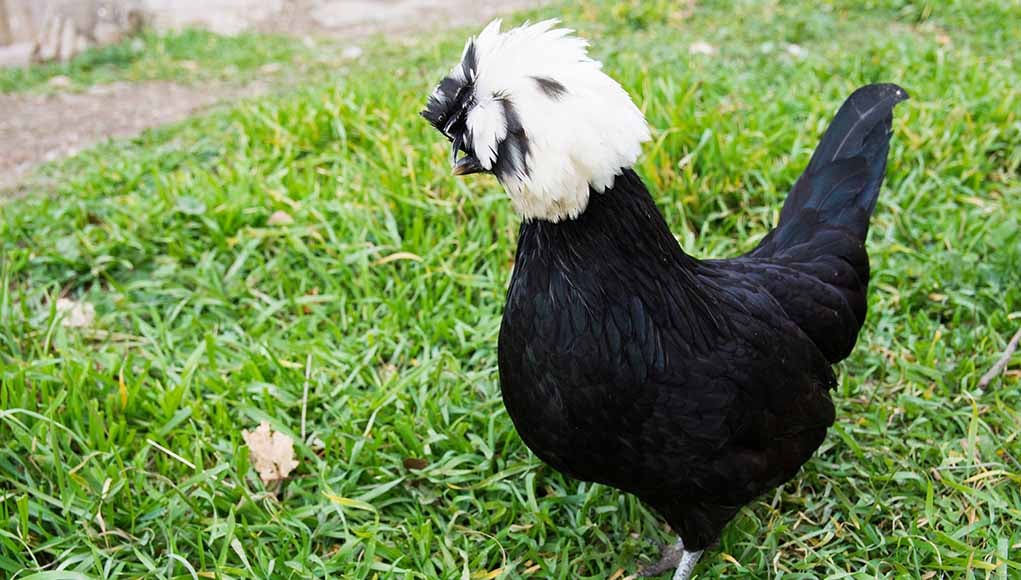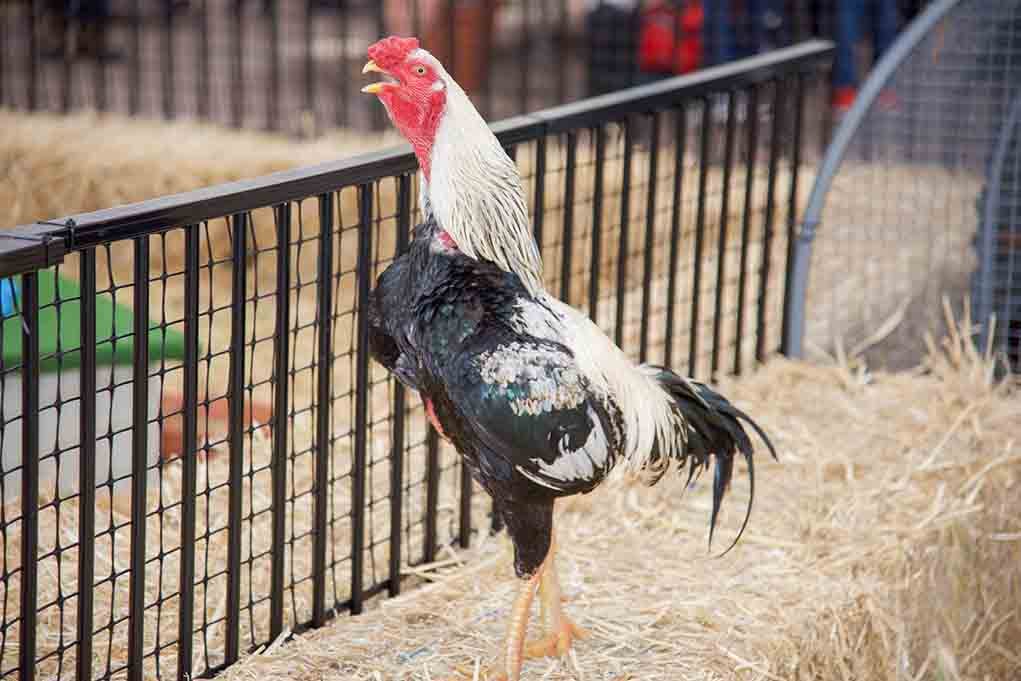When chickens have an extra toe, five instead of four, this is called polydactyl.
Unlike humans (and nearly every other animal on earth with toes), the bones in the ankle are not considered part of their feet and toes.
Chickens don’t have a fully formed calcaneum.
For humans, the calcaneum is the bone that makes up our heel; chickens simply don’t have this part as developed as we do.
In this article, I’ll explain why some chickens have this extra toe. I’ll also go through the five chicken breeds with five toes! Let’s dive in!

Why Do Some Chickens Have Five Toes?
Having five toes is rare for chickens and a fun uniqueness that only a few breeds carry. Having an extra toe does not offer any known advantages for the chickens; it’s just a strange breed standard.
Usually, this fifth toe sits atop the first toe, formally known asthe hallux, at the back of the foot.
How Many Chicken Breeds Have Five Toes?
Only five chicken breeds have five toes. This genetic mutation can be passed onto cross-bred chicks, but this fifth toe only originally appears in these five purebred chicken breeds.
Chicken Breeds with Five Toes
What I think is most interesting about these five-toed breeds is that they are all remarkably and distinctly unique in their appearances, even if you couldn’t see their feet and the extra toe.
Let’s see if you think these differences are as fascinating as I do!

Dorking
Dorkingchickens are an ancient dual-purpose breed that weighs about eight pounds as adults, and they lay 170 to 190 medium brown eggs a year.
They have noticeably shorter legs than most other chickens and are very wide, especially considering their height.
They make up for what height a Dorking lacks in their legs with their tall single comb, which usually falls to the side.
These chickens remind me of a child putting on a floppy, too-tall top hat in an attempt to enter a ride they are much too small for.
White Dorkings with rose combs are much more challenging to come by than silvery grey Dorkings with tall single combs.
White Dorkings are both endangered and rare; it’s estimated that fewer than five hundred breeding Dorkings are left in the United States.
White Dorkings always have the extra toe, while the silvery grey ones do most of the time, but not with a 100% rate.
Faverolle
Faverollesoriginated in a tiny village in France called Faverolles. Many poultry specialists agree that these birds combine the Houdan, French Rennes, Malines, Dorking, Flemish Cuckoo, and Brahma chicken breeds.
The farmers did not keep records of their creations, so this is well-educated speculation. If true, though, it’s easy to see how they acquired this fifth toe, as two of those foundational breeds also make this list.
We know that Faverolles were created by French farmers who wanted a hen that laid many eggs and produced good-sized meat birds.
Houdan was the go-to dual-purpose chicken then, but it loathed confinement, so alterations needed to be made. The result was the Faverolle.
These fluffy-faced bearded birds produce a year of about 180 to 200 tinted, medium-sized eggs. They finish growing at 6.5 to 8 pounds, making them good meat producers too.
There are several color variations, but only two are officially recognized in the United States. Those colors are salmon and white.
Faverolles are the most “standard” looking chicken breed that consistently produces five-toed offspring, and because of that, it’s easy to love these sweet little extra-toed chickens.
Houdan
Houdans are another ancient chicken breed that sports five toes instead of four.
Houdan chickens have very distinct beards, crests, and combs. The crest looks somewhat like bangs that frame their faces, while the comb is tiny, v-shaped, and hidden behind the crest.
They come in mottled or white varieties only. Mottled looks mostly black with white splashes or dots across the body and crest at random.
These creatures are thought to have been created by the French by crossing Dorking and Polish chickens, though this isn’t for sure.
Like other birds on this list, they are a dual-purpose breed that lays many high-quality eggs while producing efficient amounts of chicken meat.
These silly birds make comically large white eggs, which they, unfortunately, break periodically because the birds are just too heavy to sit on such a giant egg.
If you want more Houdans in your coop, you’ll have to move them to a different broody hen to hatch. Houdan hens make for excellent “adoptive” mothers; while they aren’t great at hatching the eggs, they are attentive and guard their chicks well.
Sultan
Sultanchickens get their names from their distinctive crests that look strikingly similar to the turbans that Ottoman sultans wore at the time of the breed’s development.
These beautiful heat-tolerant birds originated in Asia but were later finished and officially developed in modern-day Turkey in the 19th Century.
Sultan hens lay anywhere from fifty to one hundred bright white medium eggs a year.
Most birds that produce a low number of eggs are broody, and this rings true for Sultan hens.
She is happy to sit on any eggs you give her and will carefully guard and teach her chicks how to survive well into adulthood.
Sultans are aggressive with other chickens but well-known for being docile around humans.
Despite their aggressive nature, they do not forage well, nor do they know how to protect themselves from predators.
They need a sturdy coop and an extra tall fence that they cannot fly over, which will keep them safe from the weather and other dangerous animals.
No doubt about it, the fifth toe on a Sultan chicken is not the only interesting characteristic of this bird.
Non-Bearded Silkie Bantams
Silkie bantams are unforgettable. Once you’ve seen one, you’ll never wonder about its appearance again. Not only is the fifth toe a dead giveaway, but so is their unique feathering and crest, which often looks more like soft frizzy hair rather than feathers.
This results from a lack of barbicels, the teensy hooks that bind feathers together.
Another oddity regarding their feet is that the Silkie Bantam’s two exterior toes are feathered, while the rest are not.
Some call them “Pom Pom” chickens because their crest closely resembles one, much like a Polish Chicken.
These tiny little balls of fluffy feathers are best used as show chickens.
They don’t weigh much (one pound as adults) and only lay 50-100 tiny light brown eggs a year.
Final Thoughts About Five-Toed Chickens
Chicken breeds with five toes are rare and unusual animals.
尽管额外的脚趾不是服务公司e functional purposes for the chickens, they are a standard for these five breeds.
What do you think?
Would you ever consider getting a five-toed chicken?





